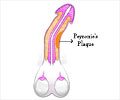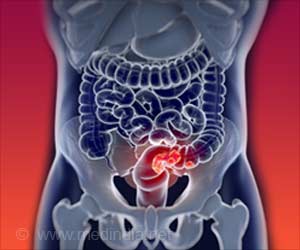New procedure helps restore the ability to have satisfactory sexual intercourse and improve sexual quality of life in men with erectile dysfunction following a nerve-sparing or non-nerve-sparing radical prostatectomy.

TOP INSIGHT
The new procedure aims to provide more axons (threadlike part of a nerve cell along which impulses are conducted) to the penis due to that partial injury (neurotomy) to the femoral nerve.
Treatment usually involves injections or a prosthesis, which can have side effects. The improved technique, pioneered in Brazil, uses a nerve removed from the patient's leg to restore erectile function.
Microsurgeon and University of Melbourne Department of Surgery Professor, Christopher Coombs, and Monash Medical Centre urologist, Mr David Dangerfield, developed the new procedure. Professor Coombs, who is also the paper's senior author, said these early results were promising. Those who could achieve erections again were extremely grateful - as were their partners. "We looked at sexual quality of life before and after. Regaining erectile function had a significant impact on quality of life and the way the men felt about themselves," Professor Coombs said.
"When they walk back in after 12 months you know if it's worked - they're smiling and so are their partners. They think it's great."
Radical prostatectomy can injure the penis' nerves to the spongy tissue, the corpora cavernosa, which are responsible for initiating an erection.
The review followed 17 patients aged under 70 with severe or moderate post-prostatectomy erectile dysfunction, who had a sexual partner and undetectable PSA (Prostate Specific Antigen) levels. Between March 2015 and October 2017, the men, whose median age was 64, underwent 'end-to-side' surgery to remove the sural nerve from the leg and graft it to the side of the larger femoral nerve in the thigh. New nerve fibres then grew along the sural nerve graft into the corpora cavernosa of the penis.
All patients tolerated the 2.5-4-hour procedure and were discharged after an overnight hospital stay. Erectile function was restored in three men within six months and nine within 12 months, a total of 71 per cent.
After a year, all 12 with restored erectile function had clinically relevant improvements in their sexual function, and 83 per cent were less bothered by their symptoms. Of the 12, seven did not require drugs to achieve erectile function "sufficient for satisfactory sexual penetration". There were no side effects besides two minor wound infections and three patients with temporary quadriceps weakness which lasted one week.
End-to-side nerve grafting was first described in a medical journal in 1903 but is not known to have been used again until 1992, when
Brazilian surgeon Fausto Viterbo began using it generally.
In 2017, Professor Viterbo reported on his use of nerve grafting to restore erectile function in men after prostatectomy. Professor Coombs and Mr Dangerfield simplified and potentially improved his technique (see below).
Lead author and NHMRC research fellow Jeanette Reece, of the University of Melbourne School of Population and Global Health's Centre for Epidemiology and Biostatistics, independently evaluated patient outcomes.
"The patients all had improved quality of life," Dr Reece said. "Two achieved erections after being unable to for 12 years. This procedure is also much less invasive than the traditional alternative of penile prosthesis."
How the technique works
The latest 'end-to-side' technique to restore erectile function sees two sural nerves removed from the legs, where they are not required for full leg function. One end of the nerve graft is attached to the thigh's femoral nerve, the other into the corpus cavernosa, which is the spongy part of the penis.
The sural nerve then acts as a scaffolding (conduit), similar to an extension cord, to deliver regenerating nerve fibres from the femoral nerve to the corpus cavernosa. After around 12 months, new nerve endings in the corpus cavernosa release neurotransmitter (acetylcholine) which help initiate an erection.
Brazilian Professor Fausto Viterbo reported on end-to-side nerve grafting to restore erectile function in 2017. The Melbourne surgeons' innovation is to remove sensory nerves grafts to induce minor injury to the femoral nerve to stimulate regeneration.
Source-Eurekalert
 MEDINDIA
MEDINDIA




 Email
Email










